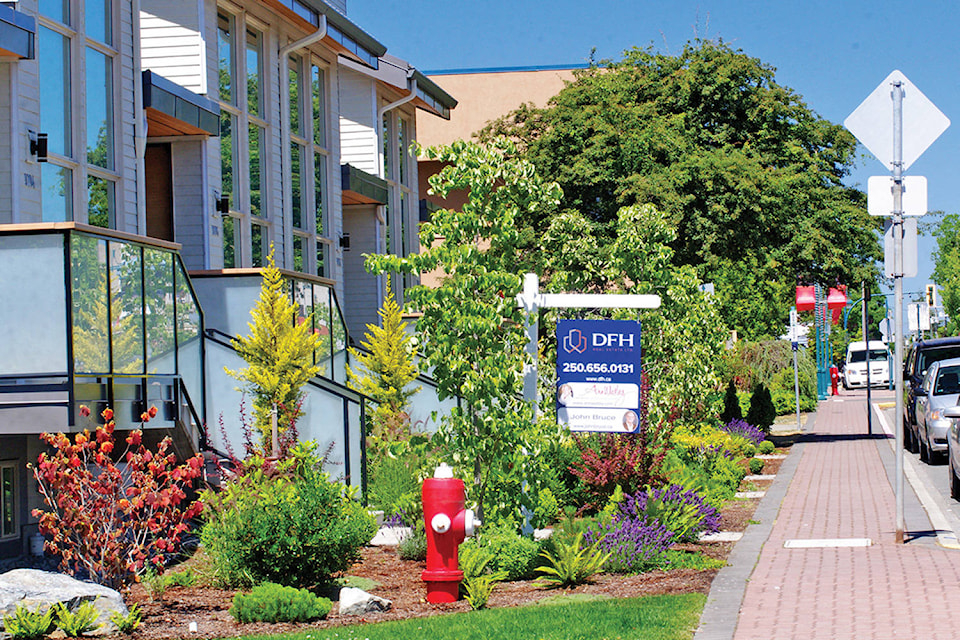Real estate sales continue to drop in 2018, but prices remain sticky, even going up, as analysts continue to grapple with recent regulatory changes.
That is the upshot from new figures that the Victoria Real Estate Board (VREB) released this week. They show local realtors sold 688 properties in March 2018 — 25.9 per cent fewer than in March last year. But the benchmark value for a single family home in the Victoria Core rose by 9.4 per cent compared to the same period last year to $859,400. In fact, the benchmark value for a condominium rose by almost 20 per cent to $490,000 compared to the same period last year.
In short, the local real estate market appears to operate somewhat outside traditional theories of supply and demand.
VREB released these figures just days after the provincial government had announced changes to the so-called speculation tax first introduced in February following criticism from various communities.
The changes exempt rural cabins and certain areas like the Gulf Islands, and reserve the two per cent tax for foreign buyers, while introducing a one per cent rate for out-of-province owners and 0.5 per cent rate for British Columbians.
Government leaders say 99 per cent of British Columbians will not pay the speculation tax, which they say will improve housing affordability by curbing speculation and some social policy experts have praised the revisions.
“I think you could argue that they’re now closer to the original intent,” said Michael Prince, a professor of social policy at the University of Victoria, in a recent interview with Black Press.
On the other hand, some communities in the Greater Victoria such as Sidney have expressed open concern about the impact of the tax and VREB blames — at least partially — these changes for the drop in March sales.
“As we expected, March sales are tracking lower than in 2017,” said Kyle Kerr, president in a release. “This is likely due to a number of factors that have created hesitation in consumers, including recent heavy measures by the provincial government to reduce the value of home prices and the federal government’s new mortgage qualification rules.”
These factors, combined with interest higher rates, have created in the words of Kerr “a housing market that is in transition due to outside influences.”
But lower sales have not necessarily translated into lower prices. “Despite all of the above, we continue to see benchmark price increases across our market and demand persists — partly due to low inventory, but also because of our highly desirable location,” said Kerr.
Simply put, the region remains a seller’s market, and figures for Saanich speak to this point. The bench mark price for a single family home in Saanich East ($898,700) rose nearly 8 per cent in March 2018 compared to the same period last year. For Saanich West ($719,000), the corresponding increase was almost 10 per cent.
Leo Spalteholz, a local realtor, who runs the House Hunt Victoria blog, said it will remain so — at least for a while. All the usual metrics such as sales and inventory point towards a cooling market, he said.
“... the new wildcard here is the impact of the [speculation] tax,” Spalteholz said. “It has the potential to bring substantial inventory on to the market that we wouldn’t have normally seen.”
